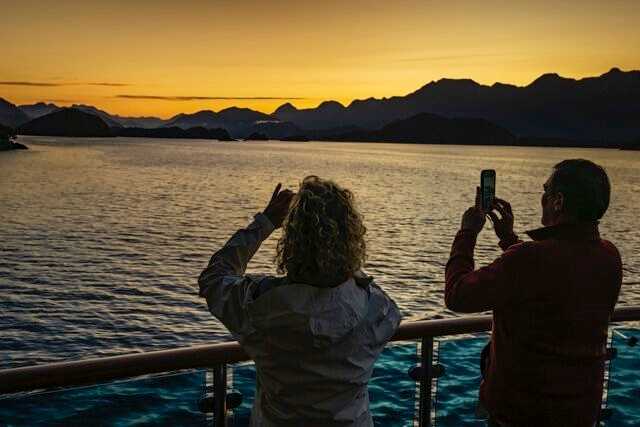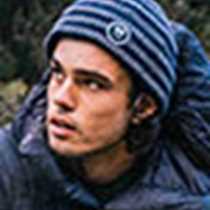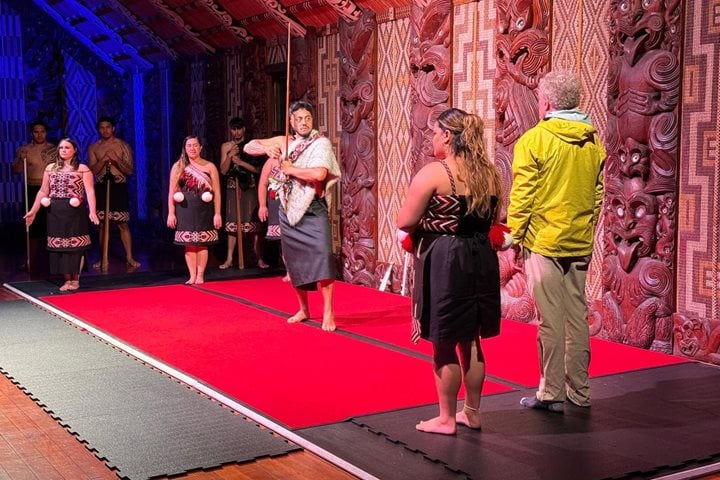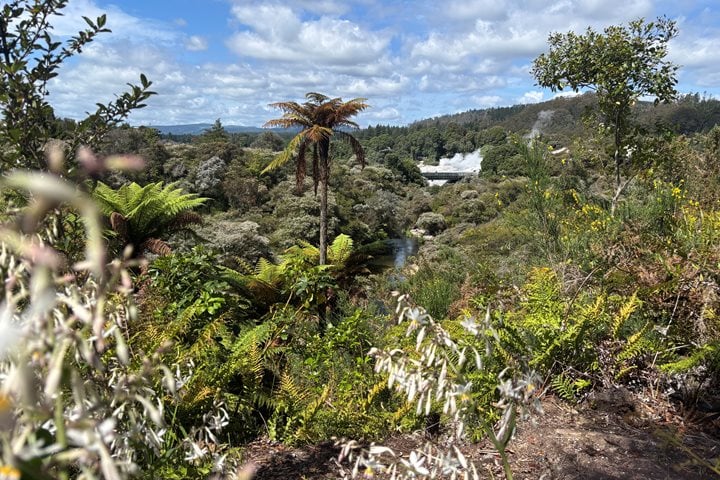At 6:45 a.m., National Geographic Orion entered Dusky Sound, which is now called Tamatea Dusky Sound after a Maori chieftain of the name Tamatea who was an explorer and master navigator.
Our anchorage was next to Anchor Island, one of Dusky’s 700 islands. The scale of the fiord is hard to comprehend as the national park is large, covering an area of 12,000 square kilometres, making it one of the largest national parks in the world.
With perfect clear skies, no swell, and little wind, we embarked on rounds of Zodiac cruises through the small islands littered around Anchor Island. We saw all sorts of birdlife in the ancient, untouched forest. Birds like the kererū, a native wood pigeon, soared above the rimu and beech forest.
A few lucky Zodiacs spotted a kārearea, New Zealand’s falcon, soaring through the trees looking for small fantails and robins. But the real pinnacle was the sighting of a Fiordland crested penguin swimming in water that was often boiling with fish. Another notable sighting was that of a mature saddleback or tīeke with two juvenile chicks on the rocks near the sea. These are incredibly rare wattlebirds that were bred back from the verge of extinction on these islands.
But what most will cherish about our time in Dusky is the incredible sightings of New Zealand fur seals on all the rocks and little beaches throughout the islands. Many mature seals were seen on the outer islands, but in the interior, we observed incredible rookeries of seal pups. The pups were about two months old so are beginning to swim quite confidently amongst the shallows.
After a spectacular morning, we ship cruised around Long Island in the middle region of Dusky and began our exit through the Acheron Passage. As we sailed through this passage, we had a spectacular champagne toast on the jacuzzi deck to celebrate an incredible day and voyage. Dinner was served as we cruised through the outer reaches of the similarly beautiful Doubtful Sound.







